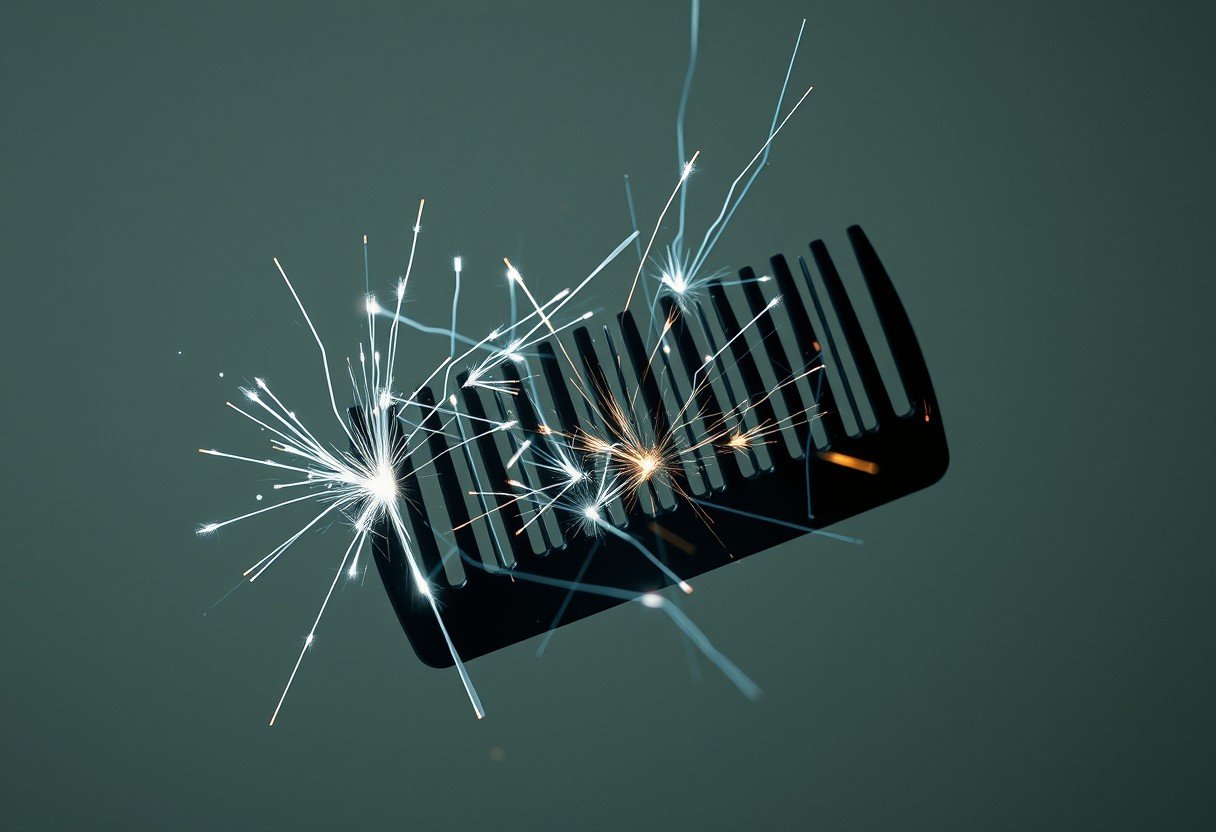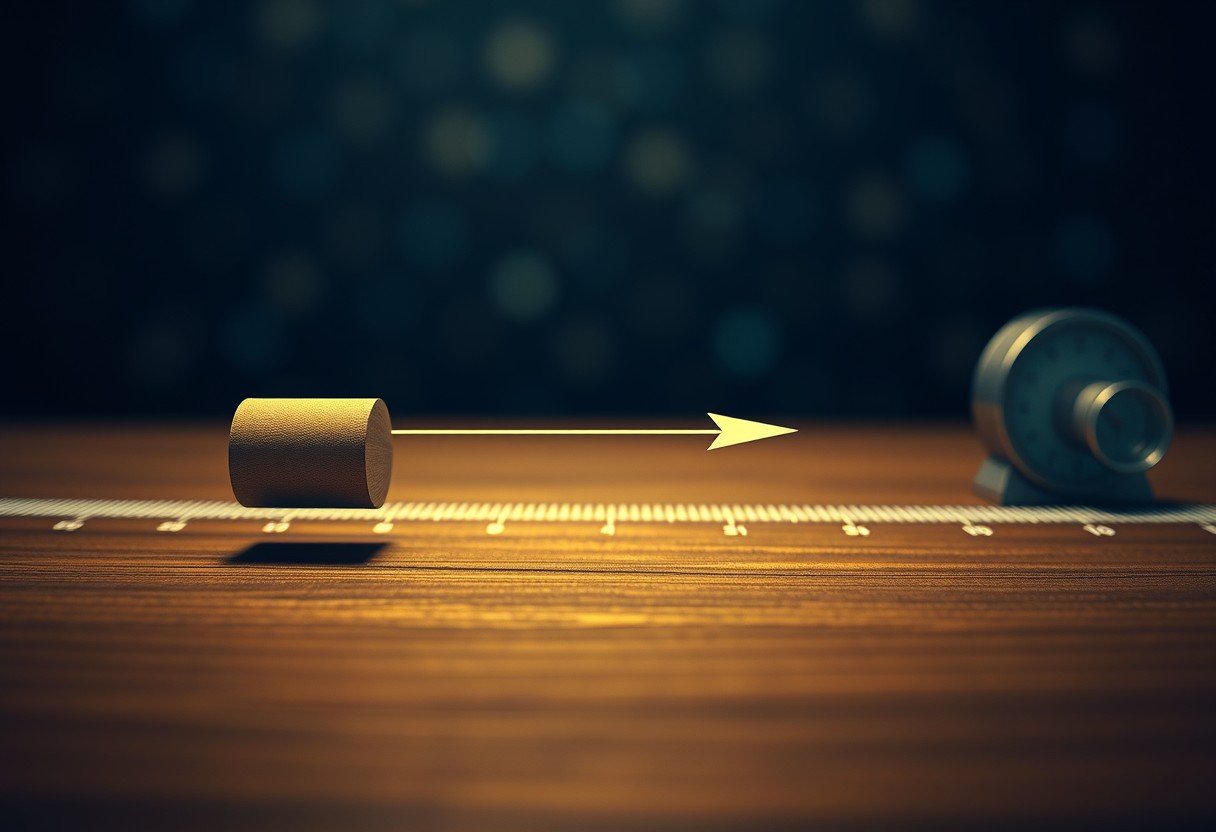When you comb your hair, the friction can cause a surprising scientific reaction known as static electricity. If your comb becomes positively charged, it means a transfer of tiny particles called electrons has occurred. Essentially, the comb has lost electrons, and your hair has gained them. This simple exchange is why your hair might suddenly frizz up or stand on end, as it now holds an opposite, negative charge that makes it react to the world around it.
The Science Behind Static Hair and Your Comb
Static electricity is simply an imbalance of electric charges on the surface of an object. Everything is made of atoms, which contain protons (positive), neutrons (neutral), and electrons (negative). Usually, objects are neutral, with an equal number of protons and electrons.
When you run a comb through your hair, the friction can cause electrons to move from one surface to the other. If the comb ends up with a positive charge, it’s because it transferred some of its electrons to your hair. This leaves your hair with an excess of electrons, giving it a negative charge.
This process is part of the triboelectric effect, where different materials become electrically charged after they come into contact and are then separated. Your hair and the material of your comb determine which way the electrons will flow.
How a Negative Charge Affects Your Hair’s Behavior
Once your hair becomes negatively charged, you’ll notice it behaves differently. Since each strand of hair now has the same negative charge, they start to push away from each other. This is because like charges repel.
This repulsion is what causes that classic “flyaway” or frizzy look where individual hairs seem to float and refuse to lie flat. At the same time, your negatively charged hair will be attracted to objects with a positive charge, which can even include your own hands or face.
You might also see your hair stick to the comb. Since the comb is positively charged and your hair is negatively charged, the two are attracted to each other. This is the same principle that makes a balloon stick to a wall after you rub it on your head.
Why Environmental Factors Play a Big Role
Have you ever noticed that static hair is much worse in the winter? That’s not a coincidence. The environment, especially the amount of moisture in the air, has a huge impact on static electricity.
Dry air, common in colder months, is an insulator, which allows static charge to build up easily on your hair. In contrast, humid air contains water molecules that are conductive. These water molecules help to draw the excess charge away from your hair, neutralizing it before it can cause frizz and flyaways.
This is why one of the best ways to combat static is to introduce more moisture into your environment or your hair care routine. Key factors include:
- Humidity: Higher humidity reduces static; lower humidity increases it.
- Temperature: Colder temperatures often mean drier air, leading to more static buildup.
- Fabrics: Wearing synthetic fabrics like polyester or nylon can increase static charge through friction.
Choosing the Right Tools to Prevent Static
The type of comb or brush you use can make a significant difference. Different materials have different tendencies to create static charge when rubbed against hair. Plastic combs are notorious for causing static because they easily create charge and don’t conduct it away.
Switching your grooming tools can be a simple yet effective solution. Natural materials are generally a better choice for keeping static at bay. They are either less likely to generate a charge or are conductive enough to help dissipate it.
| Comb Material | Static Tendency | Reason |
|---|---|---|
| Plastic | High | Insulator that easily builds up a static charge. |
| Wood or Bamboo | Low | Neutral and helps distribute natural oils, reducing friction. |
| Metal | Low | Conductive material that helps discharge static buildup. |
Using a comb made of wood, bamboo, or metal can prevent the initial charge buildup, leaving your hair smoother and more manageable after brushing.
Practical Tips for Managing and Preventing Static Hair
Beyond changing your comb, you can incorporate several simple habits and products into your routine to fight static. The main goal is to keep your hair and its surroundings well-hydrated.
Start with your washing routine. Using moisturizing shampoos and conditioners helps infuse your hair with the hydration it needs to resist static buildup. A weekly deep conditioning treatment can also make a big difference, especially during dry seasons.
Here are a few more quick tips to try:
- Use a Leave-In Conditioner: A light spritz or cream can keep hair hydrated throughout the day.
- Apply Hair Oil or Serum: A small amount can smooth the hair cuticle and weigh it down just enough to prevent flyaways.
- Try Anti-Static Sprays: These products are specifically designed to neutralize electrical charge on contact.
- Run a Humidifier: Using a humidifier in your home or office adds moisture to the air, preventing static from forming in the first place.
Even running a dryer sheet lightly over your hair or brush can work in a pinch to instantly tame static frizz.
Frequently Asked Questions about Static Hair
What exactly happens to my hair when the comb is positively charged?
When your comb becomes positively charged, it has given some of its negatively charged electrons to your hair. This leaves your hair with an excess of electrons, resulting in an overall negative charge.
Why does my hair stand on end after I comb it?
Your hair stands on end because each strand now has the same negative charge. Since similar charges repel each other, the strands push away from one another, causing them to lift and create a frizzy, flyaway appearance.
Are certain types of combs more likely to cause static?
Yes, plastic combs are major culprits because they are insulators that build up static charge easily. Combs made from natural materials like wood or conductive materials like metal are much better choices for preventing static.
How can I quickly get rid of static in my hair?
For a quick fix, you can lightly mist your hair with water, use a dedicated anti-static spray, or rub a small amount of lotion or hair oil between your palms and smooth it over your hair. A dryer sheet can also work in an emergency.
Can static electricity cause damage to my hair?
While static itself doesn’t directly damage the hair structure, the resulting flyaways and tangles can. Frizzy, charged hair is often more prone to knotting, which can lead to breakage and split ends when you try to brush it out.









Leave a Comment